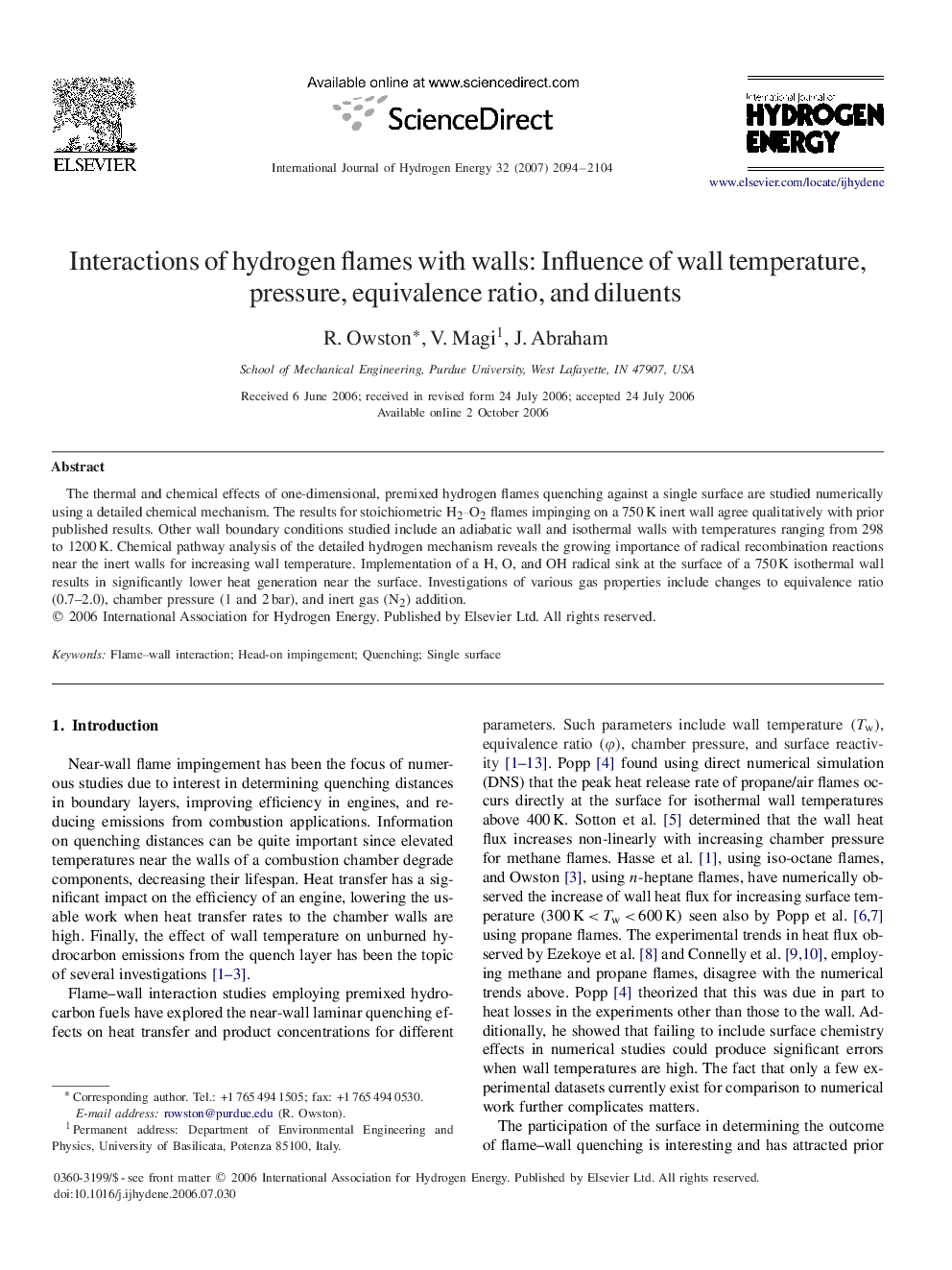| کد مقاله | کد نشریه | سال انتشار | مقاله انگلیسی | نسخه تمام متن |
|---|---|---|---|---|
| 1275014 | 1497672 | 2007 | 11 صفحه PDF | دانلود رایگان |

The thermal and chemical effects of one-dimensional, premixed hydrogen flames quenching against a single surface are studied numerically using a detailed chemical mechanism. The results for stoichiometric H2–O2H2–O2 flames impinging on a 750 K inert wall agree qualitatively with prior published results. Other wall boundary conditions studied include an adiabatic wall and isothermal walls with temperatures ranging from 298 to 1200 K. Chemical pathway analysis of the detailed hydrogen mechanism reveals the growing importance of radical recombination reactions near the inert walls for increasing wall temperature. Implementation of a H, O, and OH radical sink at the surface of a 750 K isothermal wall results in significantly lower heat generation near the surface. Investigations of various gas properties include changes to equivalence ratio (0.7–2.0), chamber pressure (1 and 2 bar), and inert gas (N2)(N2) addition.
Journal: International Journal of Hydrogen Energy - Volume 32, Issue 12, August 2007, Pages 2094–2104